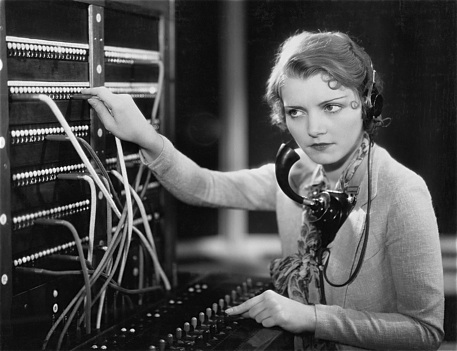Progress?
neins1@aol.com89-3171
Last week’s column led me down the path of memories.
I cannot remember, however, how old I was when the family’s first telephone was installed. I do remember that it was a large wooden contraption hung on the wall.
To talk with a friend, you had to “ring them up.” That meant a couple of quick turns of the small crank on the side of the phone to connect with “central” or the operator to connect you with your party.

In small towns like the one in which I was reared, there was no need to know the three or four digits of your friends’ phone numbers. Central would answer your rings with, “Number please.” You could answer with something like this, “Hi! Miss Annie. I need to talk with Joe.”
Sometimes, instead of connecting you with Joe by ringing his phone, she might reply with something like, “Joe’s not home. He just left to visit Jane.”
Something was lost when the Miss Annies were taken out of your phone conversation. You had to do all the work yourself by remembering all those numbers and laboriously dialing them one digit at a time on a rotary key pad.
Things really took off, though, when the smart guys came out with key pads on which you could punch out seven digit phone numbers faster than Miss Annie’s “Number please.”
Now we have gone full turn. I can push one button and get the equivalent of “Number please.” I say “Call home” or call some other number programed into the phone, and am connecting immediately or treated to a busy signal.
With that slow evolution of the telecommunications industry, it is fascinating that Emails preceded the Miss Annies by many years. Way back in the beginning, Emails were called Western Union.
Samuel Morse sent the first Email in the world in 1844. He, in effect, sent a written message instantaneously from Washington, D.C. to Baltimore, Maryland.
This message required a man sitting at a keyboard and spelling out each word of the message, just like today. Only back then, the keyboard consisted of just one key.
Good hearing was more important than good sight for communicating in those earlier Emails. The transmission was by the sound of dots and dashes—a dash is just a multi-million second longer than a dot. For example,
A is .—, I is — —, T is —, etc.
A telegraph operator in action was an amazing sight. The speed with which they converted letters and numbers into dots and dashes and then back again leaves Email users in the dust. A telegraph instrument in operation sounds like a machine gun.
Sadly, the Westen Union messages were the primary form of notification of deaths, missing in action, and prisoner status during WWII. If a family member was in military service during that period, you did not want to see a Western Union messenger at your door.
Although the telephone was slow in getting to my family’s home, Dad had one of those contraptions in his general store.
Many families did not have automobiles in the 1930s and those were the days when “old ladies” had cars that were driven only when they went to church. So home deliveries were the rule of the day.
Customers would get Miss Annie to “ring up” Dad at the store and give him an order for the day. Home refrigerators were still a few years down the road, so many customers bought groceries on a daily basis.
Until gas rationing began in WWII, Dad’s delivery service was on an hourly basis. The delivery man would simply walk into the customer’s back door and leave the order on the kitchen table. Imagine that. No locked doors.
Dad’s delivery vehicle was a truck. One of his competitors, however, the Parks family in the Red and White Store, used two horse drawn wagons for their deliveries.
Ice was also delivered in Somerville by a horse drawn wagon. Homeowners had cards in which the quadrants were painted 25, 50, 75, 100.
If someone wanted 50 pounds of ice, she would put her sign in the front window with the 50 on top.
The ice man would stop his horses in front of the house, read the sign, and put a 50 pound back of ice in the wooden ice box on the back porch.
While the ice man was going through the unlocked door on the back porch, kids in the neighborhood were probably raising that heavy duck covering on the wagon to see if a small piece of ice had been chipped off that they could enjoy sucking for a while.
So here’s the perspective.
There was a time not too long ago when most communications between friends and neighbors was in face to face visits.
That was a time when, on the very rare occasions that a family dined in a restaurant, they did not have to listen to the occupants of other tables talking af full volume into something called a cell phone.
Is progress always better?
enough





